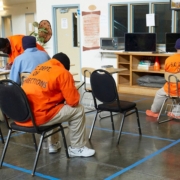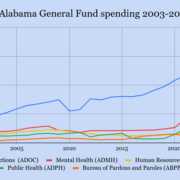By Eddie Burkhalter, Appleseed Researcher
Alabama’s prison system is in crisis. Federal courts have said so. Back-to-back years of record prison deaths show it. The people who live and work inside those facilities feel it every day.
Violence, understaffing, and overcrowded dorms are pushing the system past a breaking point, and while new prison construction continues, that alone won’t fix the deeper problems. Alabama needs answers that go beyond bricks and mortar—answers rooted in what’s actually working in other parts of the country.
This briefing lays out five real-world examples of prison reforms from other states. They’re not theories. These are programs already in place that are reducing violence, cutting recidivism and helping staff do their jobs more safely and effectively.
Take California’s GRIP program, where men serving long sentences learn how to manage anger and take responsibility for past harm. Graduates almost never come back to prison. In South Carolina, a pilot program for young adults has cut the use of solitary confinement and assaults on staff. Missouri, Maine and Oregon are trying models that focus on rehabilitation and basic human dignity—with results that speak for themselves.
These aren’t soft-on-crime experiments. They’re serious efforts, backed by data, that reflect a growing national understanding: safer prisons aren’t just better for those inside. They’re better for public safety, for communities and for the people who go to work behind the fences every day.
Alabama has the opportunity to lead among Southern states in implementing bold, results-oriented reform. The following case studies offer a roadmap for change—one that can enhance safety, reduce legal liabilities, support staff retention, and, most importantly, provide incarcerated individuals with the tools to return home prepared to contribute to their communities.
Read Appleseed’s latest report to learn more. We will be sharing this roadmap with lawmakers, ADOC officials, families of incarcerated Alabamians, and advocates across the state as evidence that transformative change in possible even in prison. And as the report shows, the most powerful change is being driven by incarcerated people themselves.
Positive Programs report









Leave a Reply
Want to join the discussion?Feel free to contribute!